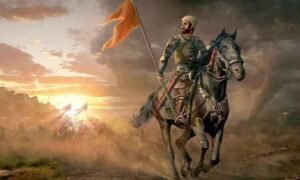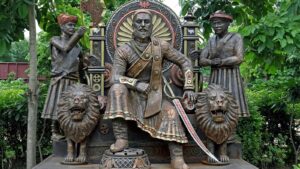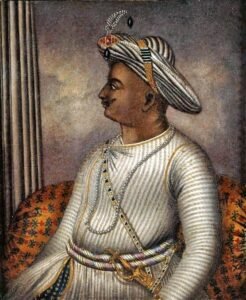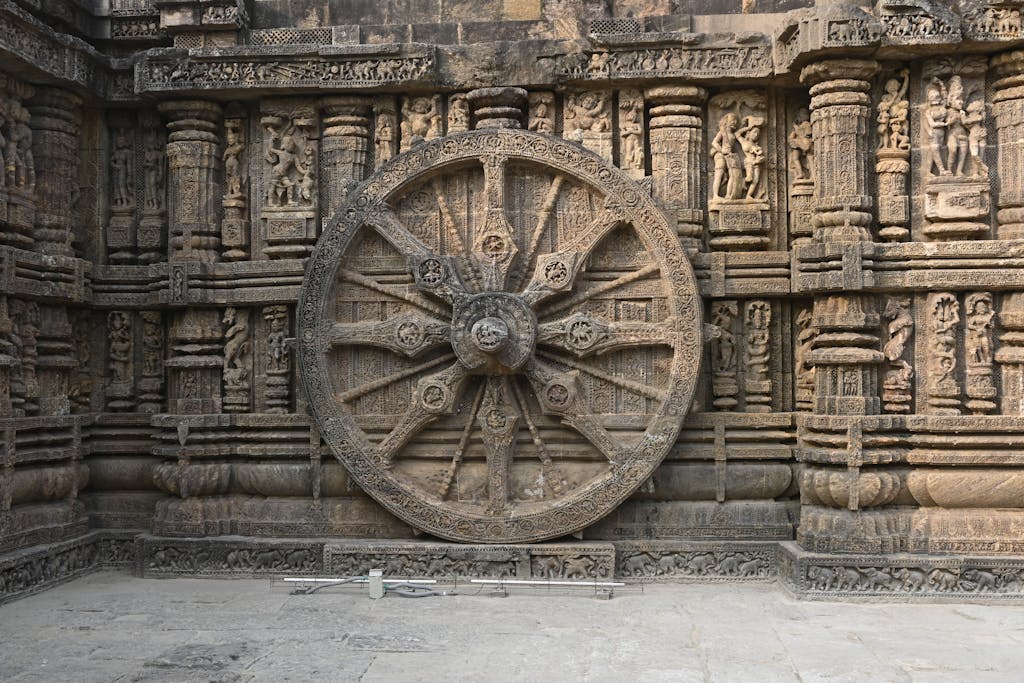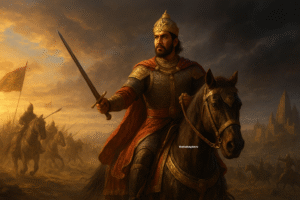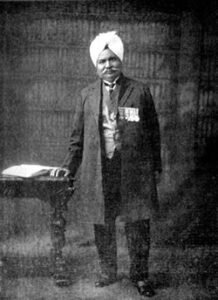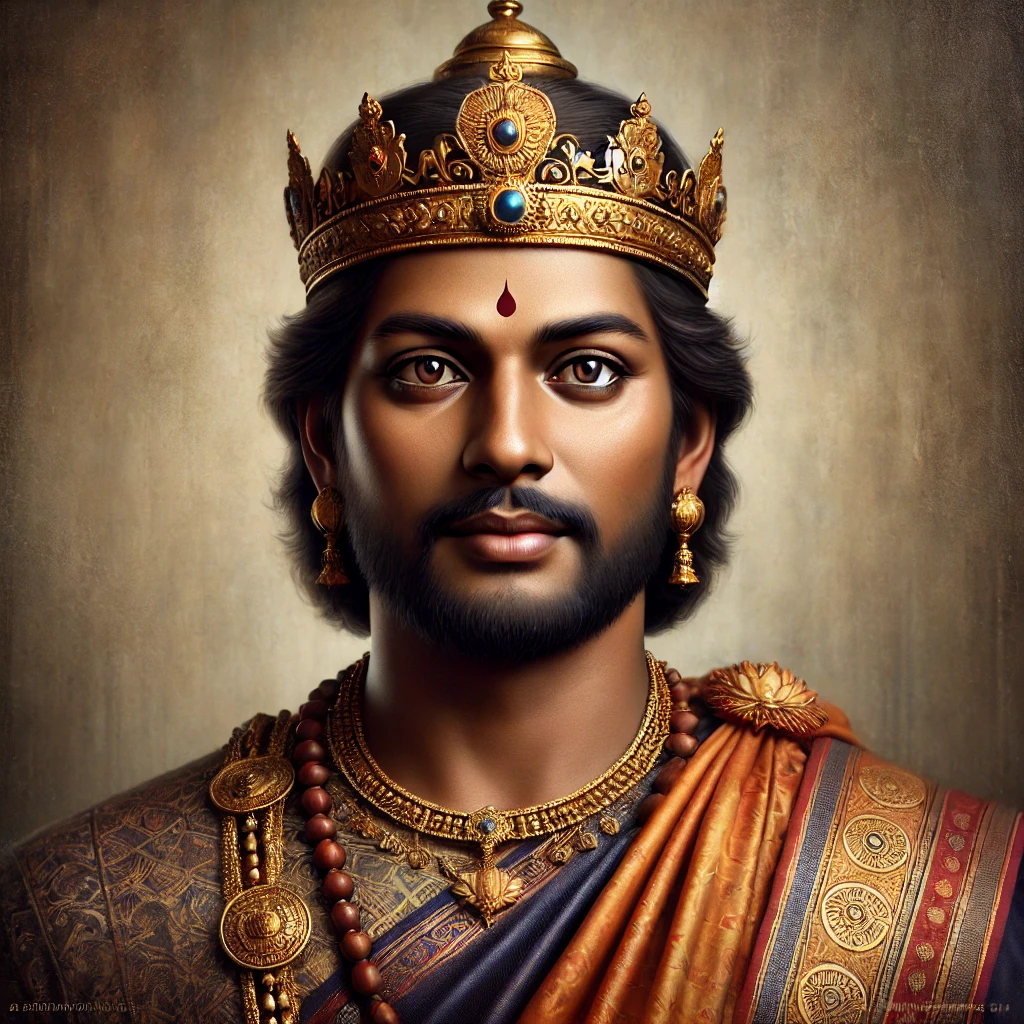
1. Kumaragupta I: The Gupta Dynasty’s Stabilizer
Kumaragupta I, also known as Mahendraditya, was one of the most notable rulers of the Gupta Dynasty, which is often referred to as the Golden Age of India. His reign, spanning from approximately 415 to 455 CE, marked a period of significant prosperity and cultural development in ancient India. The Gupta Empire, under his leadership, witnessed extensive territorial expansion, economic prosperity, and remarkable achievements in arts, literature, and science. Kumaragupta I’s ability to maintain stability in a vast and diverse empire speaks volumes about his administrative acumen and military prowess.
Despite the challenges he faced, including internal strife and external threats, Kumaragupta I managed to uphold the legacy of his predecessors and contribute to the flourishing of the Gupta Empire. His reign is often seen as a continuation of the empire’s golden age, solidifying the foundations laid by his father, Samudragupta, and ensuring the Gupta Dynasty’s influence over a significant portion of the Indian subcontinent. This article delves into the life, reign, and legacy of Kumaragupta I, exploring his contributions to Indian history and culture.
2. Background: The Gupta Dynasty Before Kumaragupta I
Before Kumaragupta I ascended to the throne, the Gupta Dynasty had already established itself as one of the most powerful and culturally rich empires in Indian history. The foundation of this dynasty was laid by Chandragupta I, who ruled from around 320 to 335 CE. He was instrumental in uniting smaller kingdoms under his leadership, thereby forming the Gupta Empire. Chandragupta I’s marriage to Kumaradevi, a Lichchhavi princess, not only brought political stability but also expanded the empire’s territory.
Samudragupta, the son of Chandragupta I and father of Kumaragupta I, further expanded the empire through his aggressive military campaigns. Known as the “Napoleon of India,” Samudragupta’s reign (c. 335-375 CE) was marked by numerous conquests, as recorded in the Allahabad Pillar inscription. His military success not only enlarged the empire but also brought immense wealth, fostering a period of economic prosperity and cultural flourishing.
Samudragupta was a patron of the arts and encouraged the development of Sanskrit literature and classical music. His court was a hub for scholars, poets, and artists, laying the groundwork for what would become the Gupta Golden Age. By the time Kumaragupta I came to power, he inherited a vast, prosperous, and culturally vibrant empire, but he also faced the challenge of maintaining the empire’s stability and defending it against external threats.
The transition of power to Kumaragupta I was smooth, owing to the strong administrative system established by his predecessors. Kumaragupta I was likely groomed from an early age to take on the responsibilities of rulership, which included managing a diverse empire and continuing the policies that had brought prosperity to the Gupta realm. His ascension marked the continuation of a dynasty that was at the height of its power, with a strong economy, flourishing culture, and a formidable military.
3. Early Reign of Kumaragupta I
Kumaragupta I ascended the throne around 415 CE, following the death of his father, Samudragupta. His early reign was characterized by a focus on consolidating the empire’s territories and reinforcing the administrative structures that had been established by his predecessors. One of the first tasks he undertook was to ensure the loyalty of the various provinces and vassal states within the empire. This involved both diplomatic efforts and, when necessary, military interventions to suppress any signs of rebellion.
Kumaragupta I’s administration continued the policies of his father, with a strong emphasis on centralization and efficient governance. He retained the services of experienced ministers and officials who had served under Samudragupta, ensuring continuity in the administration. The empire was divided into various provinces, each governed by a local governor who reported directly to the emperor. This system allowed for effective control over the vast territories of the Gupta Empire and ensured that taxes were collected efficiently, contributing to the empire’s wealth.
In addition to maintaining internal stability, Kumaragupta I also focused on strengthening the empire’s borders. The Gupta Empire, during his reign, was surrounded by various kingdoms and tribes, some of which posed significant threats. Kumaragupta I adopted a mix of diplomacy and military prowess to manage these external relations. He maintained cordial relations with neighboring kingdoms through marriage alliances and treaties, while also keeping a well-equipped and trained army ready to defend the empire’s frontiers.
Kumaragupta I’s early reign also saw the continuation of cultural patronage. Like his father, he was a patron of the arts and supported the work of scholars, poets, and artists. This patronage not only enhanced the cultural richness of the empire but also served as a means of legitimizing his rule. The early years of his reign laid the foundation for the later successes of his administration, setting the stage for a period of relative peace and prosperity.
4. Military Campaigns and Expansion
Kumaragupta I is noted for his military acumen, particularly in the context of defending the Gupta Empire from external threats and expanding its territories. One of the most significant challenges he faced during his reign was the threat posed by the Pushyamitras, a tribe located in the western part of the empire. The Pushyamitras, who were known for their military prowess, launched several attacks on the Gupta Empire’s borders. Kumaragupta I led his armies personally in a series of campaigns to repel these invasions, eventually subduing the Pushyamitras and securing the empire’s western frontiers.
These military campaigns were crucial not only for the defense of the empire but also for maintaining the loyalty of the empire’s provinces. By demonstrating his capability as a military leader, Kumaragupta I ensured that the
various governors and local rulers remained loyal to the central authority. The successful defense against the Pushyamitras also sent a clear message to other potential adversaries, reinforcing the strength and stability of the Gupta Empire under his rule.
Kumaragupta I’s military achievements were not limited to defensive actions. He also sought to expand the empire’s influence through conquests in the north and northeast regions of India. Historical records suggest that he launched successful campaigns against several smaller kingdoms and tribes in these areas, thereby extending the Gupta Empire’s boundaries. His expansionist policies contributed to the empire’s economic growth, as new territories brought in additional resources, tribute, and manpower.
Inscriptions from his reign, such as those found in Udayagiri and other parts of central India, provide evidence of his military campaigns and victories. These inscriptions not only commemorate his achievements but also highlight his role as a warrior-king who upheld the honor and might of the Gupta Dynasty. The strategic importance of these campaigns cannot be overstated, as they helped to consolidate Gupta control over a vast and diverse empire, ensuring the flow of wealth and maintaining the empire’s dominance in the region.
Moreover, Kumaragupta I’s military campaigns were instrumental in protecting trade routes that were vital to the empire’s economy. The Gupta Empire was a hub for trade, with routes connecting it to other parts of Asia and beyond. By securing these routes through military means, Kumaragupta I ensured the continued prosperity of the empire’s trade networks, which facilitated the exchange of goods, culture, and ideas.
His military successes also contributed to his reputation as a capable and just ruler, which was essential for maintaining the support of his subjects and the loyalty of his nobles. By the time of his later years, Kumaragupta I had established himself as a formidable ruler who could both defend and expand his empire, a legacy that would be remembered long after his reign.
5. Economic Prosperity During Kumaragupta I’s Reign
The Gupta Empire under Kumaragupta I experienced significant economic prosperity, a hallmark of his reign. This period of affluence was driven by several factors, including the stability of the empire, effective governance, and the flourishing of trade networks. The empire’s economy was primarily agrarian, with agriculture forming the backbone of its wealth. Kumaragupta I implemented policies that improved agricultural productivity, such as the construction of irrigation systems and the promotion of land grants to Brahmins and other religious institutions. These land grants not only ensured the loyalty of influential groups but also increased agricultural output, contributing to the empire’s overall wealth.
Trade, both internal and external, was another critical component of the Gupta economy. The Gupta Empire’s strategic location allowed it to become a hub for trade routes connecting India with Central Asia, Southeast Asia, and the Mediterranean world. Goods such as spices, textiles, precious stones, and metalwork were highly sought after by foreign merchants, bringing immense wealth into the empire. Kumaragupta I’s reign saw the continuation and expansion of these trade networks, which played a vital role in the empire’s economic prosperity.
The prosperity of the Gupta Empire during Kumaragupta I’s reign also supported cultural and intellectual activities. The surplus wealth generated by agriculture and trade was often invested in the arts, literature, and science. This period saw the creation of numerous cultural artifacts, including coins, inscriptions, and monuments that testify to the economic strength of the empire. Additionally, the prosperity of the empire allowed for the patronage of scholars and artists, leading to significant advancements in various fields, including mathematics, astronomy, and literature.
Kumaragupta I’s reign is thus remembered as a time of economic strength, which not only enriched the empire but also laid the groundwork for its cultural achievements. The wealth generated during this period helped to sustain the Gupta Empire through subsequent challenges, ensuring its place as one of the most prosperous and culturally vibrant periods in Indian history.
6. Religious and Cultural Contributions
Kumaragupta I’s reign was marked by significant contributions to religion and culture, reflecting the Gupta Dynasty’s role as a patron of the arts and a promoter of religious harmony. The Gupta rulers were known for their support of Hinduism, Buddhism, and Jainism, and Kumaragupta I continued this tradition, fostering an environment where multiple religions could thrive.
One of the most notable aspects of Kumaragupta I’s religious patronage was his support for Hinduism. He was a devout follower of Vishnu, as indicated by his title, Mahendraditya, which aligns him with the god Vishnu. Temples and religious monuments dedicated to Vishnu and other deities were constructed during his reign, contributing to the spread and consolidation of Hindu practices and beliefs. These structures were often adorned with intricate carvings and sculptures, reflecting the high level of artistic achievement during his reign.

In addition to his support for Hinduism, Kumaragupta I also showed respect for Buddhism and Jainism. The Gupta period is often regarded as a time of religious tolerance, where different faiths coexisted peacefully. Kumaragupta I’s reign saw the continuation of this tradition, with inscriptions and records indicating patronage to Buddhist monasteries and Jain temples. This patronage helped in the construction and maintenance of religious institutions, which played a crucial role in the spiritual and cultural life of the empire.
Culturally, Kumaragupta I’s reign was a period of great artistic and literary activity. The Gupta period is often celebrated as a classical age in Indian history, with significant contributions to Sanskrit literature, drama, and poetry. Scholars and poets such as Kalidasa flourished during this era, producing works that have become timeless classics of Indian literature. Kumaragupta I’s patronage of these scholars and artists ensured that his reign would be remembered not only for its military and economic achievements but also for its contributions to the cultural heritage of India. Nalanda University, traditionally attributed to the Gupta emperor Kumaragupta I, came into existence in the 5th century CE. (Also Read : Destruction of Nalanda University)
The artistic achievements of this period, including sculptures, paintings, and architecture, reflect the high level of skill and creativity that was encouraged under Kumaragupta I’s rule. His reign thus represents a peak in the cultural and religious life of the Gupta Empire, with lasting impacts on Indian civilization.
7. Challenges and Decline
Despite the successes of his reign, Kumaragupta I faced significant challenges that ultimately contributed to the decline of the Gupta Empire. One of the most pressing issues was the internal strife that arose within the empire, particularly towards the later years of his rule. The vastness of the Gupta Empire, combined with the autonomy granted to local rulers, sometimes led to power struggles and rebellion. Managing these internal conflicts required significant resources and attention, which strained the empire’s administration and military.
In addition to internal challenges, Kumaragupta I had to contend with external threats that tested the resilience of the Gupta Empire. The most notable of these threats came from the Hunas, a Central Asian nomadic group that began to invade northern India during his reign. The Hunas, known for their ferocity in battle, posed a formidable challenge to the Gupta military. Kumaragupta I led several campaigns to repel these invaders, and while he managed to keep them at bay during his lifetime, the threat from the Hunas would later contribute to the empire’s decline.
The constant need to defend the empire’s borders from external threats and suppress internal rebellions drained the empire’s resources. The military campaigns required to deal with these challenges were costly, both in terms of finances and manpower. The strain on the empire’s resources began to show, leading to economic difficulties and weakening the central authority.
Another factor contributing to the decline was the succession issue that arose after Kumaragupta I’s death. His chosen successor, Skandagupta, faced significant opposition from other claimants to the throne, leading to a period of instability. This internal discord further weakened the empire, making it more vulnerable to external attacks and less capable of maintaining the cohesion that had characterized the Gupta Empire during its height.
By the time of Kumaragupta I’s death around 455 CE, the Gupta Empire, though still powerful, was beginning to show signs of decline. The challenges he faced, both internal and external, set the stage for the eventual weakening of the empire, which would continue under his successors. However, despite these challenges, Kumaragupta I’s reign remains a significant chapter in the history of the Gupta Dynasty, marked by both great achievements and formidable obstacles.
8. Legacy and Historical Significance
Kumaragupta I’s legacy is one of a ruler who managed to maintain and even expand one of India’s greatest empires during a period of both prosperity and adversity. His reign is often viewed as the last significant phase of the Gupta Empire’s golden age, a time when the empire was at its peak in terms of territorial extent, economic prosperity, and cultural achievements.
One of the most enduring aspects of Kumaragupta I’s legacy is his role in sustaining the Gupta Empire’s cultural and religious traditions. His patronage of the arts, literature, and religion helped to create a rich cultural heritage that has had a lasting impact on Indian civilization. The works of literature and art produced during his reign, including those by scholars like Kalidasa, continue to be celebrated as some of the finest examples of classical Indian culture.
Kumaragupta I’s ability to manage the vast and diverse Gupta Empire is another key aspect of his legacy. Despite the challenges of ruling such a large territory, he maintained internal stability and defended the empire against external threats. His military campaigns, particularly against the Pushyamitras and the early incursions of the Hunas, demonstrated his strategic acumen and determination to protect his empire.
Historically, Kumaragupta I is remembered as a capable and just ruler, whose reign marked the continuation of the Gupta Dynasty’s golden age. However, his reign also represents the beginning of the end for the Gupta Empire, as the challenges he faced laid the groundwork for the empire’s eventual decline. Despite this, his contributions to the empire’s prosperity and cultural achievements have ensured that his reign is regarded as one of the high points of ancient Indian history.
Kumaragupta I’s legacy is also reflected in the monuments, inscriptions, and coins that have survived from his reign. These artifacts provide valuable insights into the administration, economy, and culture of the Gupta Empire, and serve as a testament to the achievements of one of India’s greatest emperors.
In modern historiography, Kumaragupta I is often seen as a ruler who managed to uphold the grandeur of the Gupta Empire during challenging times, ensuring that his dynasty’s legacy would endure long after his death. His reign is a reminder of the complexity of ruling a vast empire, balancing the demands of governance, defense, and cultural patronage.

